Exciting things are happening at a rural school district in the heart of Central Maine.
RSU 19, a geographically dispersed, rural school district between Waterville and Bangor, is comprised of eight towns: Corinna, Dixmont, Etna, Hartland, Newport, Palmyra, Plymouth, and St. Albans. These communities are among some of the hardest hit by continued cuts to education funding at the state level, and the school system has just completed a difficult budgeting process. But that hasn’t stopped its teachers and administrators from ensuring the district’s students have opportunities for diverse, hands-on educational experiences.
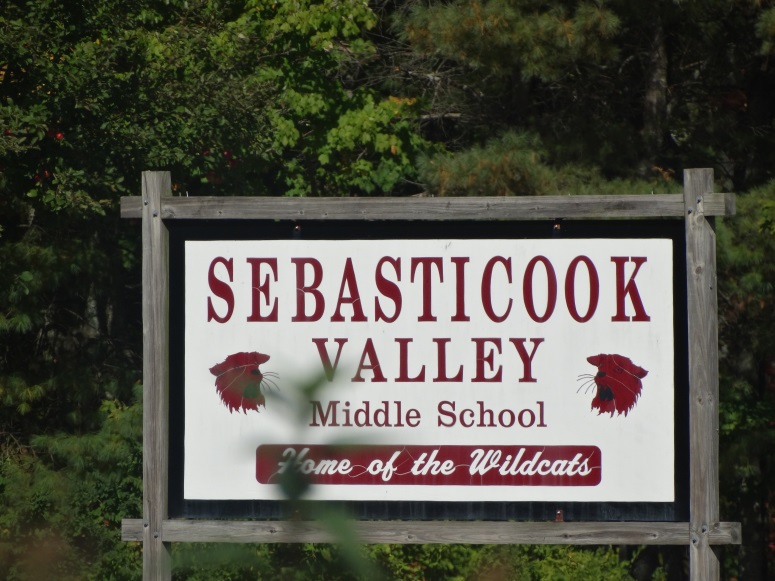
For instance, several of the schools in the district are beginning to look at educational and school improvement opportunities connected to school gardens. Each of the schools currently operating or planning garden projects is doing so at a different scale, using different methods. Sebasticook Middle School students are revitalizing several raised beds on a portion of the school’s vast lawn.
The beds, originally created years ago by a teacher interested in getting students into gardening, have been growing nothing but weeds for several years. The eight raised beds sit in front of the school and are one of the first things seen by students, parents, and visitors.
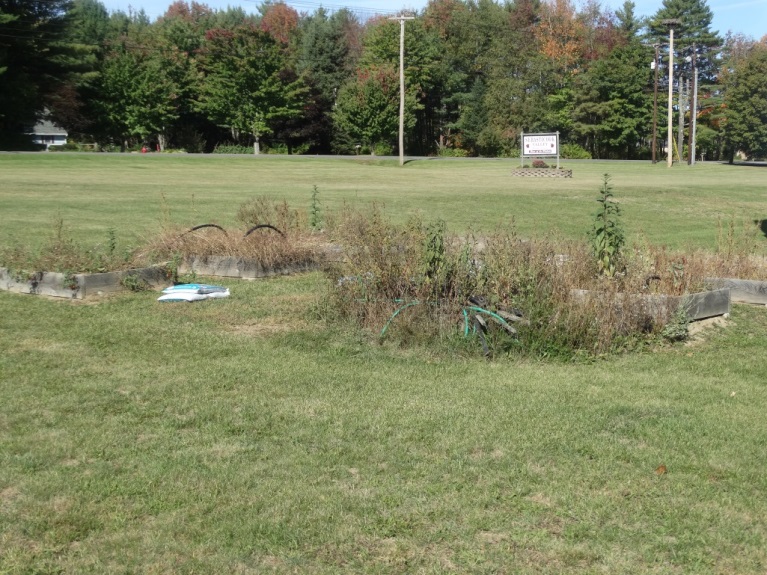
The raised beds in front of the school
On a sunny, warm day at the end of September, dozens of students in multiple grade levels participated in the first stage of a garden revitalization project. The goal was to clear the beds and get them ready for planting.
NRCM was originally contacted by RSU 19 Facilities Management Director Licia Goodridge because of her interest in diverting discarded food from the district’s waste stream. Licia, who has a very clear understanding of how much money the school district spends to handle its waste stream, also understands the implications, environmental and economic, for removing food waste from the equation.
But she and other members of the administration wanted to look at the problem holistically. And that’s where the school gardens come into the picture. RSU 19 is looking at ways to reduce the amount of trash for which it has to pay to dispose. But administration and several schools in the district are also looking at what they can do with that waste.
The idea is simple. Beautify the school grounds. Create on-site, educational opportunities that span subject areas, from math to art, biology to English. Create student-led initiatives to produce usable ingredients for the RSU’s dining services, for use in the schools. Divert organic waste from the dining services programs to create compost that can be used to enhance the gardens.
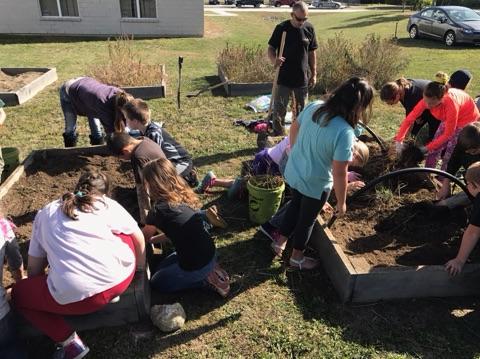
The project involved fifth grade classes and representatives of the student government. Students and teachers gathered to hear a short presentation about the project by NRCM’s Environmental Policy Outreach Coordinator Ryan Parker who, before coming to NRCM, spent a decade as a commercial, organic farmer promoting small-space gardening.
Then, students quickly got down to business and showed they weren’t afraid to get their hands dirty. After removing the weeds from each bed, they worked to incorporate compost into the beds to help revitalize their biology. Once that was finished, students worked in groups to prepare the beds for planting. This involved raking the beds level and as smooth as possible. Once that was done, students covered the beds with sheets of black plastic which can be used repeatedly season after season. The plastic acts as a chemical-free herbicide.
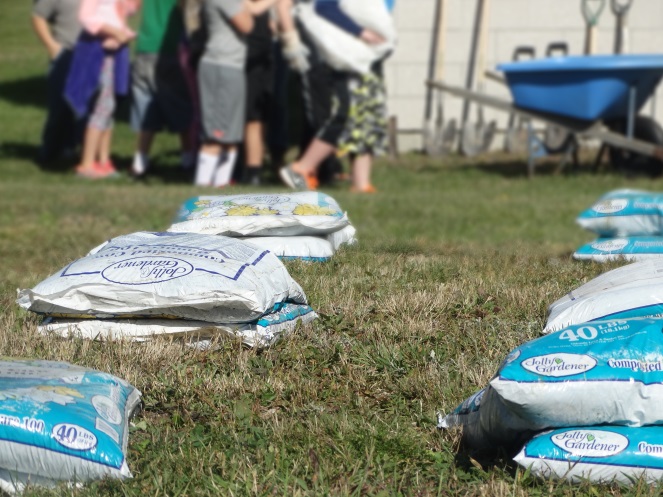
This technique is known as “solarization.” Seeds need heat and moisture to germinate. Most need dark conditions. The black plastic provides all of those. Most weed seeds germinate in the top two inches of soil. The solarization method takes advantage of all of these factors by providing ideal conditions for weed seeds to germinate. However, once they have done so, they can be quickly smothered or become overheated by the heat captured beneath the dark plastic. Most farmers using solarization agree that the plastic should be left on the bed for three weeks. This allows any slow to germinate or extremely heat/dark tolerant plants to be smothered.
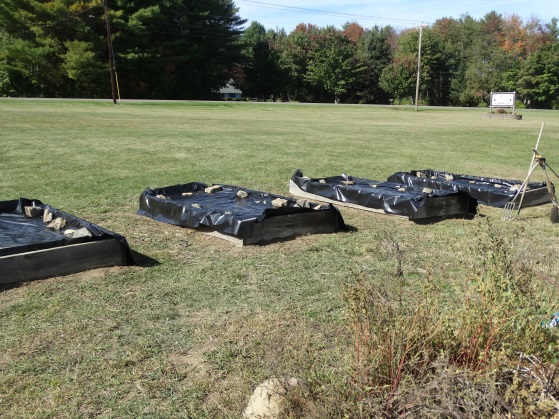
Students completed the revitalization project in one afternoon. The next step was to gather all of the supplies necessary for planting the beds and winterizing them. Ryan worked with the principal, Angela Brown, and several staff members, including Lisa Sawyer, to help plan for crops that are cold-hardy and will survive a Maine winter with minimal protection. This includes vegetables like kale, spinach, and winter hardy lettuce.
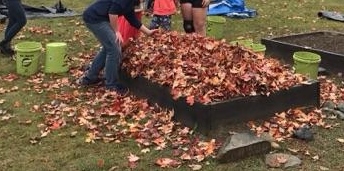
Students planted these items on October 21, once the three-week solarization process had been completed. In addition to the greens, carrots, and turnips, the fifth graders and student council members planted and mulched garlic. They also set aside one bed for flowers, both for their aesthetic appeal and to provide food for pollinators in the spring and summer.
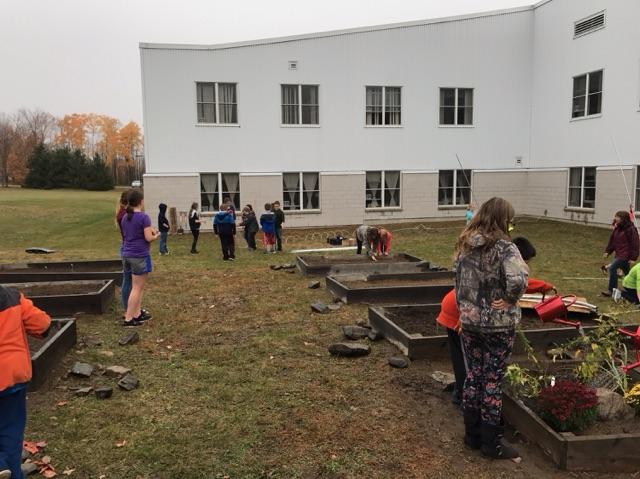
The final step was to winterize the beds. The vegetables planted in these beds were chosen for their cold hardiness. In other words, they were specifically chosen because they will germinate in cold, autumn weather and grow at a time when other plants—tomatoes, for instance—are dying off in the face of Maine’s harsh winters.
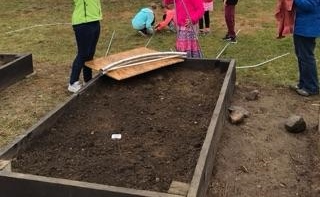
Ryan showed the students how to use a specialized conduit bender to shape 10-foot lengths of half inch EMT conduit into supportive hoops that would allow the students to construct miniature hoop houses over each bed. Individually or in small groups, the students measured, marked, and bent the conduit. The older students then attached the hoops to the beds. Finally, the hoops were covered with plastic to conserve the moisture and warmth, allowing the seeds to germinate and the plants to get busy growing.
The supplies, tools, and seeds for the garden revitalization project were purchased with funds made available through a grant from Modern Woodmen of America. The organization has also funded school garden projects at another school in the district.
The students at Sebasticook Middle School thoroughly enjoyed the hands-on learning that took place. Several of the teachers involved incorporated the garden project into their lesson plans and will continue to do so as the project evolves and grows (pun intended). This includes math classes, which used the opportunity to learn about the calculation of area and volume using the garden beds. As the gardens and the students grow together, we can only expect more wonderful opportunities for the program to blossom!











Leave a Reply